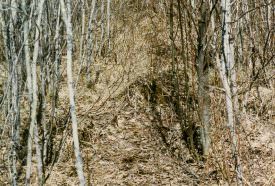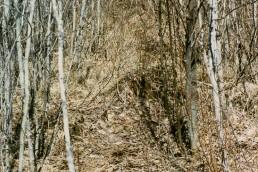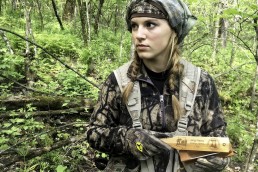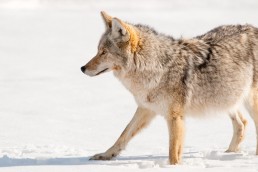20 Tips for Improving Success in High-density Hunter Areas
SHARE THIS POST
If you hunt on public land where you rarely find yourself alone throughout a day, if your promising stand site is often spoiled by other hunters, and if your hunting success is far from acceptable as a result, here are some tips that can improve matters.
1.) Scout for fresh deer signs two to three weeks before the hunting season begins. Plan to stand-hunt downwind or crosswind of very fresh deer signs a half-mile or more from inhabited buildings, roads and trails used by other hunters. For each area you plan to hunt, use two stand sites intended for different wind directions—west and south, for example—thus enabling you to hunt downwind or crosswind daily where you won’t likely be directed by most whitetails whatever the wind direction.
2.) Get to your stand site in darkness – 30 to 60 minutes before first light in the morning, well before other hunters enter the area. When other others begin hunting, they will move deer in your direction.
3.) Hunt where few others care to hunt: on islands or land that can only be reached via watercraft, hip boots or waders, for example. Hunt on or adjacent small highlands in wooded swamps or bogs. My best buck and best bear in 70 years of hunting came from such sites. Other spots likely to be avoided by other hunters include centers of steep, well-wooded hillsides, especially rugged terrain, or large expanses of dense brush or other types of dense cover including cornfields. In cornfields, sit in the last 20 rows of corn next to timber farthest from buildings and public roads.
4.) Hunt when few other hunters care to hunt: in light to heavy rain or snow, very early in the day (beginning at first light), midday and during the entire last legal half-hour of the day (right up to 30 minutes after sunset). This means, go to your stand in darkness and depart in darkness.

5.) Travel to stands on established deer trails, not trails or roads obviously manmade and used by other hunters. During preseason remove dead branches from your trails to improve silence underfoot. Never mark your trails with colored tapes or easily spotted blazes (bark removed with hatchet or knife). Do not cut down any trees. Detour around them. Keep the pruning of slender branches arching across your trails to the barest minimum. Your stand trails should appear to be ordinary deer trails. Fluorescent tacks are okay to use as trail markers (visible in the beam of a flashlight at night) but place them low on tree trunks where they won’t be as noticeable to others in daylight. Never begin marking your trails with tacks close to roads or trails likely to be used by other hunters. Instead, use natural objects, a certain boulder or tree, for example, as your starting point. Use two horizontal tacks to mark turns, and three to indicate when you are nearly at your stand site.
Where your trail splits, place a log or dead branch across the trail you don’t plan to use. Mark trails across openings with rock men; one small rock atop a larger rock. After doing all this, you will easily find your way in darkness and others will find it difficult to take advantage of your knowledge and efforts. If you do not stop while heading to a stand in darkness, deer encountered along the way will simply step aside and watch you pass and resume whatever they were doing after you are out of sight and hearing – no damage done.
6.) Hunt midweek, Monday through Thursday, when fewer hunters are afield.
7.) Hunt in weather that makes whitetails active during odd hours; midday hours with little or no wind during a thaw or near-thaw following several days of frigid temperatures, for example. Every whitetail in the woods will then be on the move between 11 a.m. and 2 p.m. Whitetails will also be especially active in fog or drizzle. A short period of activity generally begins immediately following the end of heavy rain or a period of strong wind if it happens midday. Whitetails will not be active for 24 hours after the end of the first heavy snow of winter. Keep track of local weather forecasts on a radio and get to your stand a half-hour before deer are expected to become active, even if it means you might get wet.
8.) Be a different kind of stand hunter – not the kind that is easy for experienced adult whitetails to identify and avoid these days. Extra-alert, experienced whitetails will be constantly searching for dark human silhouettes and telltale movements of hunters in trees. Instead, stand-hunt at ground level hidden in natural, unaltered cover. Wear a camo headnet or mask under your camo blaze-orange cap and sit on a backpacked stool.
9.) Remain as motionless as possible. You must be motionless (and silent) at least 30 minutes before a deer can be expected to appear near your stand. Motionless stand hunting will set you apart from most other hunters. Where many hunters are in the area, deer will be keying on quiet areas.
10.) When another hunter approaches, stand or wave to get his attention and put a finger to your lips to warn him to avoid talking out loud. Don’t talk or encourage talking.
11.) Remain at your stand an hour or more after another hunter passes. After hearing, seeing and/or smelling the other hunter depart, nearby deer are likely to consider it is safe to move to where you are sitting. Whenever you feel your stand site has been ruined by other nearby hunters, move to a new site 100 yards or more away.
Are you enjoying this post?
You can be among the first to get the latest info on where to go, what to use and how to use it!
12.) Be different from other hunters in another way: avoid using cover scents, scent killers (some of which have unique scents of their own), calls, rattling antlers or lure scents. The woods will be full of other hunters using all of these things, making it easy for experienced deer to recognize and avoid them. Keep relatively scent-free (your clothing and body washed with scent free soap). Avoid contaminating your hunting clothes and body with odors alarming to whitetails, odors characteristic of bars and restaurants, for example. While not hunting, wear different outer clothing.
13.) Become a one-shot, drop-them-in-their-tracks marksman, thereby avoiding losses of crippled deer to other, unsportsmanlike hunters.
14.) Wear camo blaze-orange, not solid blaze-orange outer clothing, which appears glowing-white to whitetails.
15.) Get at least eight hours of sleep per night. If you cannot remain alert from dark to dark, you’ll miss opportunities to take many deer, most often without your knowledge.
16.) Use no ATV or other motorized vehicle within a half-mile of your stand site.
17.) Become a bow hunter or muzzleloader hunter, enjoying whitetail hunting while hunter densities are generally low and most hunters are stand hunters, meaning, most deer will remain in their home ranges doing predictable things during predictable hours at predictable sites.
18.) Avoid hunting near others who have reached their stand sites ahead of you. You won’t be welcomed, you will have caused deer to abandon the vicinity for awhile, maybe all day, and your odds and other hunter’s odds for success will be greatly diminished. Hunt somewhere else.
19.) If none of the above works, find a new hunting area, ideally a less crowded area on public land, private land with exclusive permission to hunt (typically requiring favors and/or cash), join a hunt club with extensive leases for use by members only or purchase or lease hunting land for yourself.
20.) Be patient.
Remember, these tips only have to work once per hunting season to make you a successful whitetail hunter.
Dr. Ken Nordberg has written more than 700 magazine articles and 12 books on the habits and hunting of whitetails and black bears, including the Whitetail Hunters Almanac series. He also produced Doc’s Buck and Bear Hunting School videos. His encyclopedic website is at drnordbergondeerhunting.com.
MWO
SHARE THIS POST
Did you enjoy this post?
You can be among the first to get the latest info on where to go, what to use and how to use it!
Dr. Ken Nordberg
Based on his 55 years of field research, Dr. Ken Nordberg has written more than 800 magazine articles, 12 books on whitetails—including the famous Whitetail Hunter’s Almanac series—five books on black bear hunting and produced Buck and Bear Hunting School videos. You may peruse his encyclopedic website with whitetail hunting tips: drnordbergondeerhunting.com, his blog: drnordbergondeerhunting.wordpress.com, or social media pages.



